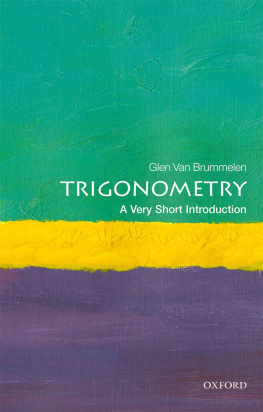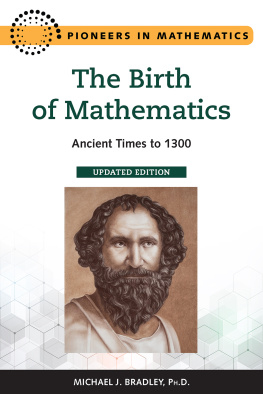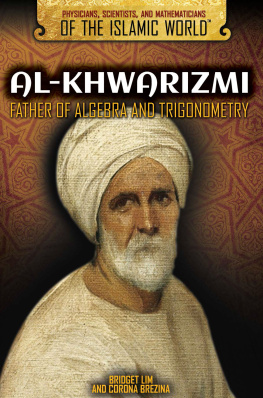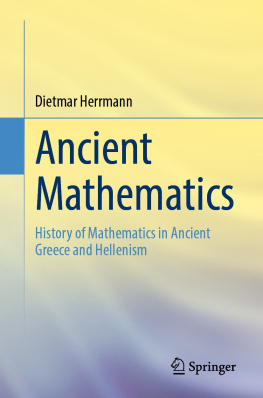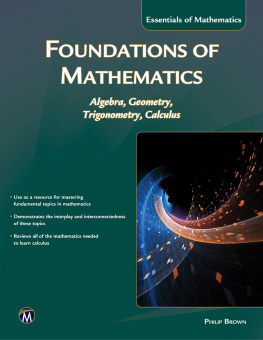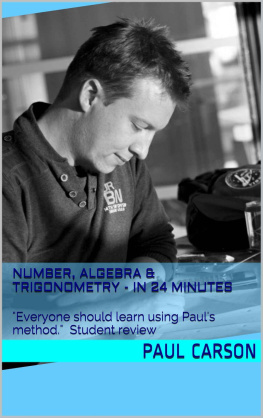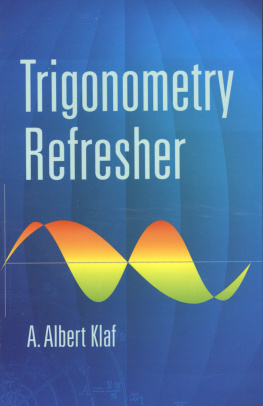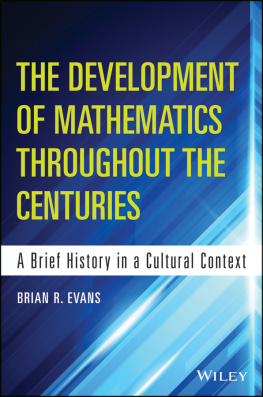
Heavenly Mathematics
Heavenly Mathematics
The Forgotten Art of Spherical Trigonometry

Glen Van Brummelen
PRINCETON UNIVERSITY PRESS
PRINCETON AND OXFORD
Copyright 2013 by Princeton University Press
Published by Princeton University Press, 41 William Street, Princeton, New Jersey 08540
In the United Kingdom: Princeton University Press, 6 Oxford Street, Woodstock, Oxfordshire OX20 1TW
Jacket art: Painting of Euclid by Justus von Ghent. Bettmann/Corbis
press.princeton.edu
All Rights Reserved
Library of Congress Cataloging-in-Publication Data
Van Brummelen, Glen
Heavenly mathematics : the forgotten art of spherical trigonometry / Glen Van Brummelen.
p. cm.
Includes bibliographical references and index.
ISBN 978-0-691-14892-2 (hardcover : alk. paper)
1. Spherical trigonometry. 2. Trigonometry. I. Title.
QA535.V36 2013
516.24dc23
2012023216
British Library Cataloging-in-Publication Data is available
This book has been composed in Minion Pro
Printed on acid-free paper.
Printed in the United States of America
1 3 5 7 9 10 8 6 4 2
Contents

Preface

Mathematical subjects come and go. If you glance at a textbook from a century ago you may recognize some of the contents, but some will be unfamiliar or even baffling. A high school text in analytic geometry, for instance, once contained topics like involutes of circles, hypocycloids, and auxiliary circles of ellipses: topics that most college students today will never see. But spherical trigonometry may be the most spectacular example of changing fashions in the 20th-century mathematics classroom. Born of the need to locate stars and planets in the heavens, for more than 1500 years it was the big brother to the plane trigonometry that high school students slog through today. Navigators on the open seas relied on spherical trigonometry to find their way; lives were lost when their skills failed them. Its dominance continued through the early 20th century: editions of Euclids Elements that were designed for classrooms often included appendices devoted to this now-forgotten subject.
During World War II the popularity of spherical trigonometry remained high. Applications in naval and military settings were touted as motivations, and were given a prominent place in the exercises. Through the early 1950s textbooks continued to be published, although gradually spherical trigonometry found itself relegated to the last major section in a textbook mostly devoted to plane trigonometry. Suddenly, mid-decade, it disappeared, dropped in a pedagogical tide that was heading in other directions. Today almost no trigonometry texts even mention the existence of a spherical counterpart. The only book on the subject continuously in print (Clough-Smith 1966) is difficult to obtain and available only from nautical booksellers. This paucity comes strangely at a time when new applications of spherical trigonometry are being found. GPS devices have some of its formulas built in. Its amusing to see bibliographies of research papers in computer graphics and animation (for use in movies like those made by Pixar) referring to nothing older than last week, except for that stodgy old spherical trig text.
So if mathematics teachers have long since given up on spherical trigonometry, why bring it back? Im not advocating that everyone should dust off the covers of their grandparents textbooks (although, come to think of it ), but a treasure would be lost if no one did. The applications are interesting and substantial: finding the distance between two points on the Earths surface, such as how far the Titanic sailed before it sank; navigating a sailboat or airplane by the stars; predicting the Suns altitude so that a faithful Muslim will know when to perform his daily prayers. Much better, and much more genuine, than the obviously contrived examples found in todays plane trigonometry classroom: finding heights of trees, or distances of motorboats as they speed across unnamed lakes.
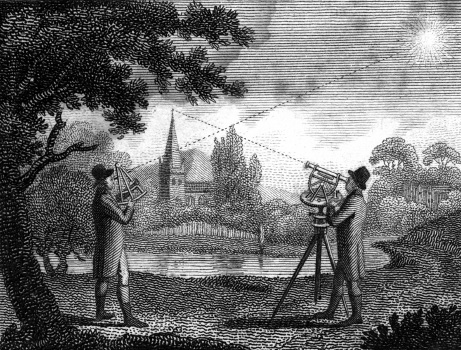
Figure 0.1. Image from the title page of Bonnycastles Treatise on Plane and Spherical Trigonometry. In the drawing, one gentleman is measuring the height of a church spire presumably in preparation for a plane trigonometry problem; the other is measuring the altitude of the sun for a spherical problem. Western Archives, Western University.
But I admit that for me, the navigation, astronomy, and geography are only the icing on the cake. I appreciate spherical trigonometry mostly because its beautiful. The theorems are elegant and often surprising. Even the ordinary results deepen our understanding of the trigonometry that we already know; many of the identities in plane trigonometry are only flattened images of their spherical counterparts. The proofs, especially the geometric ones, can be unexpected and are sometimes breathtaking.
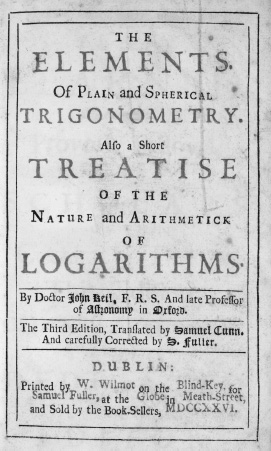
Figure 0.2. Title page of John Keills Elements of Plain and Spherical Trigonometry, 3rd edition, 1726. The Thomas Fisher Rare Book Library, University of Toronto.
Shocking as it may sound, spherical trigonometry was not always a charming mathematical diversion. Early 20th-century Canadian humorist Stephen Leacock seems to have had a special relationship with it, mentioning it four times in his writings. His experience seems not to have been pleasant. In his story The Man of Asbestos (Nonsense Novels) Leacock imagines a future where education happens not in schools, but by brain surgery. Even this method seems to have been distasteful for the ingestion of several subjects, our favorite among them:
It was a mere nothing; an operation of a few minutes would suffice to let in poetry or foreign languages or history or anything else that one cared to have. Here, for instance, he added, pushing back the hair at the side of his head and showing a scar beneath it, is the mark where I had my spherical trigonometry let in. That was, I admit, rather painful, but other things, such as English poetry or history, can be inserted absolutely without the least suffering. When I think of your painful, barbarous methods of education through the ear, I shudder at it. Oddly enough, we have found lately that for a great many things there is no need to use the head. We lodge themthings like philosophy and metaphysics, and so onin what used to be the digestive apparatus. They fill it admirably.
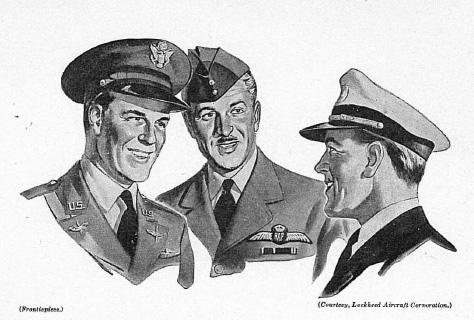
Figure 0.3. Frontispiece of Kells/Kern/Blands 1942 Spherical Trigonometry with Naval and Military Applications. Courtesy Lockheed Martin Corporation.
Now, I have no wish to cut a hole in anyones scalp. Sometimes, though, there is benefit to be gained by struggling with a text for a little while. If education were always a downhill journey, the pearls grown by the irritation of a properly placed grain of sand would never exist. Leacock imagined such schooling:
Next page

